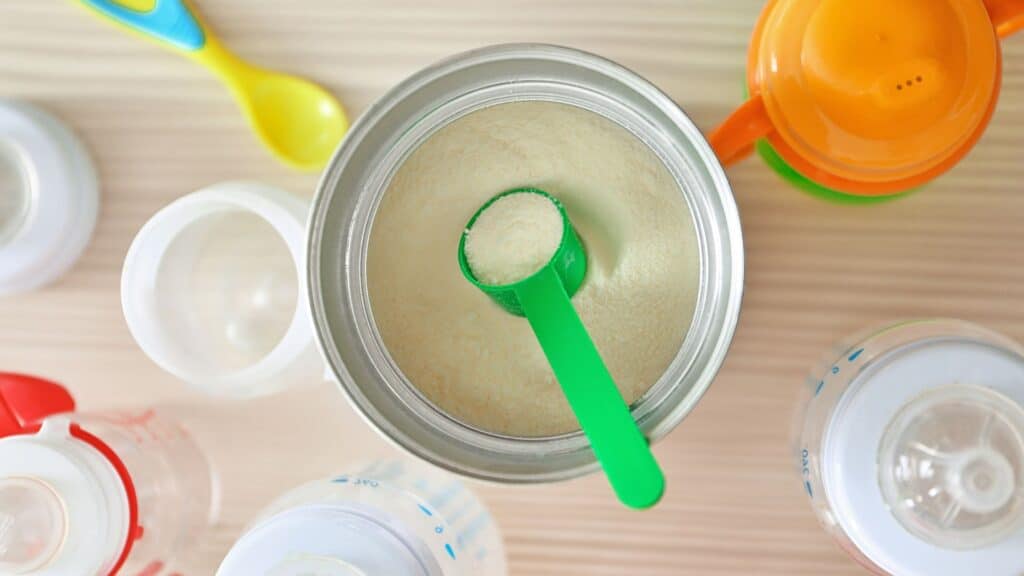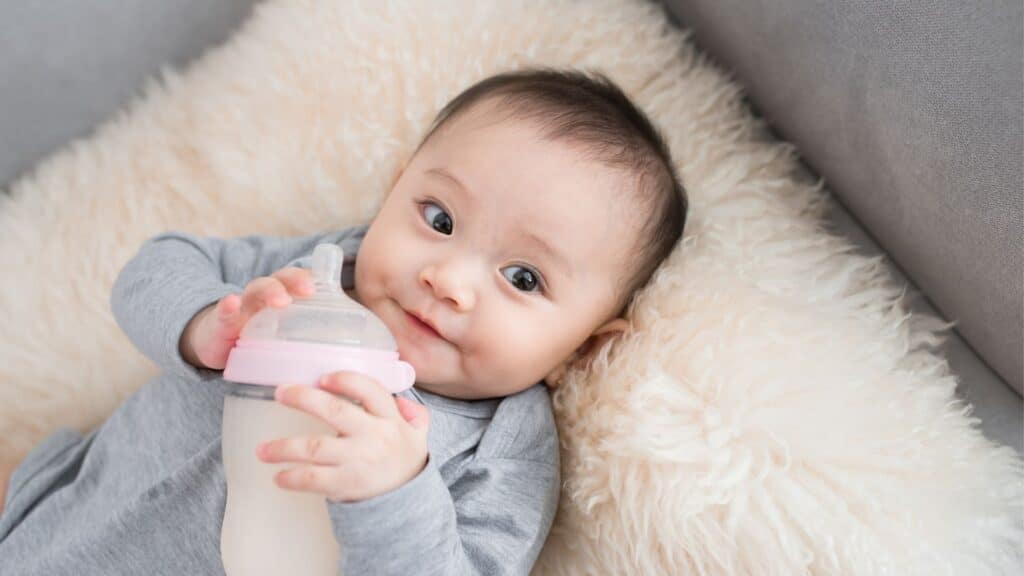In the world of infant care, ensuring the safety and well-being of your little one is of paramount importance. As new or experienced parents, navigating the formula storage and preparation process can be daunting. With numerous guidelines, recommendations, and best practices to follow, it is essential to have a reliable source of information to guide you through this process.
This content aims to provide a comprehensive guide, simplifying the process while emphasizing safety and effectiveness. From choosing suitable storage containers to preparing the perfect temperature, this article covers everything so you can feel confident and secure in providing optimal nutrition for your baby.

Do I Need to Sterilize My Baby’s Bottles?
As a new parent, you may be overwhelmed by the sheer amount of information about infant care. A common question among parents is whether they need to sterilize their baby’s bottles. This concern is especially relevant when preparing infant formula, as you want to ensure the feeding process is safe and hygienic. In this column, we’ll explore the importance of sterilizing bottles, the process involved, and its impact on your baby’s health.
Sterilizing your baby’s bottles is an essential step in preparing infant formula to minimize the risk of contamination. Bacteria can easily find their way into the prepared formula, especially if the bottles and nipples have not been properly sterilized. These contaminants can multiply rapidly and lead to illness, especially in newborns with weakened immune systems.
The process of sterilizing baby bottles is quite simple and can be done using different methods. Some of the most common techniques include:
- Boiling: Submerge the bottles, nipples, and all other feeding equipment in a large pot of water and bring it to a rolling boil for about 5 minutes. Make sure that all the parts are fully submerged and not touching each other or the pot’s sides. After boiling, let the items air dry on a clean rack or towel.
- Steam sterilizers: These electric devices use high-temperature steam to kill bacteria and germs. Simply follow the manufacturer’s instructions to place the bottles and accessories in the sterilizer and let the device do its job.
- Microwave steam bags: These convenient bags are designed for sterilizing bottles and nipples in the microwave. Fill the bag with the specified amount of water, add the feeding equipment, and microwave according to the instructions provided.
It is essential to sterilize your baby’s bottles before the first use and ideally after each use, especially during the first few months when your baby’s immune system is still developing. As your baby grows older and their immune system strengthens, you can transition to regular washing with hot, soapy water and thorough air drying.
Additionally, it’s important to remember that bacteria from the baby’s mouth can also contaminate the bottle during feeding. Therefore, it’s crucial to discard any remaining prepared formula after each feeding session and not reuse it.
Different Types of Baby Formula
In the previous column, we discussed the importance of sterilizing your baby’s bottles to ensure safe and hygienic feeding, especially when preparing infant formula. Now that you’re familiar with the essential step of sterilizing let’s dive deeper into the world of baby formula and explore the various types available. This knowledge will help you make an informed choice in providing your little one with the best nutrition possible.
There are three primary types of infant formula: powdered formula, liquid concentrate, and ready-to-feed. Each type has its specific guidelines for preparation and storage, and it is crucial to follow these instructions carefully to ensure the safety and well-being of your baby.
Powdered Formula
This is the most common and cost-effective type of baby formula. As the name suggests, powdered infant formula comes in a dry, powdered form that you mix with water to create a liquid feed. While this type of formula is not sterile and carries the highest risk of contamination, properly sterilizing bottles and following the correct infant formula preparation steps can minimize this risk. Always mix the right amount of powdered baby formula with the appropriate amount of water and serve it as a warm formula for your baby. Discarding any remaining prepared formula after each feeding is essential, especially for newborns with a weakened immune system.
Concentrated Liquid Formula
This type of formula comes in a liquid form that needs to be diluted with water before feeding. It is typically more expensive than powdered formula but offers a convenient and time-saving option for busy parents. Always follow the manufacturer’s instructions for the correct water-to-formula ratio and ensure that the bottles are adequately sterilized before use.

Ready-to-feed Formula
This is the most convenient type of infant formula, as it requires no mixing or preparation. It comes in single-use containers or larger bottles, and you can pour it directly into a sterilized baby bottle. This type of formula is sterile and has the lowest risk of contamination, making it suitable for newborns or babies with weakened immune systems. However, it is also the most expensive option.
When choosing the right baby formula for your child, it’s important to note that homemade infant formula is not recommended. The ingredients and proportions in commercially available formulas are carefully designed to meet the specific nutritional needs of babies, and attempting to replicate this at home can result in imbalanced nutrition and potential health risks.
How to Prepare Baby Formula
Now that you better understand the various options, it’s time to discuss how to properly prepare baby formula to ensure a safe and nutritious feeding experience for your little one.
Check water quality and source
Before preparing the formula, ensure your water source is safe for consumption. If you need more clarification about tap water quality, consult your local health department or the Centers for Disease Control and Prevention (CDC) guidelines for using water when preparing infant formula. You can also use bottled water labeled for infant formula preparation.
Mixing powdered or concentrated formula
To mix infant formula, follow the manufacturer’s instructions on the formula container for the correct ratio of water to the powder or concentrate. Measuring the ingredients accurately is essential to provide the appropriate nutrition for your baby. Mix the formula thoroughly, ensuring there are no clumps or undissolved particles.
Warming the formula
While some babies are perfectly fine with cold formula or formula prepared at room temperature, many babies prefer warm formula. To warm a bottle of formula, place it in a bowl of warm water or use a bottle warmer. Avoid using a microwave to heat the formula, as it can create hot spots that could burn your baby’s mouth [1]. Always test the temperature of the formula on the inside of your wrist before feeding your baby to ensure it’s not too hot.
Using a ready-to-feed formula
A ready-to-feed formula is the most convenient option, as it requires no mixing or dilution. Simply pour the formula into a sterilized bottle and serve. If your baby prefers warm formula, you can warm the bottle in a bowl of warm water, following the abovementioned precautions.
Feeding your baby
Hold it in a comfortable position, with its head slightly elevated to prevent choking. Gently introduce the bottle nipple into their mouth, allowing them to latch on and suck at their own pace. Keep an eye on the formula level in the bottle to ensure that your baby is consuming an appropriate amount.
Discarding leftover formula
It’s essential to discard any leftover formula after each feeding, as bacteria from your baby’s mouth can contaminate the remaining formula, posing a risk to your baby’s health. Never refrigerate or reuse any leftover formula.
Storing prepared formula
If you need to prepare the formula ahead of time, store it in a sealed container in the refrigerator for up to 24 hours. Always label the container with the date and time of preparation to ensure freshness. Remember to warm the refrigerated formula gently before feeding your baby.
Special considerations
If your baby was born prematurely or has a weakened immune system, consult your healthcare provider for specific formula preparation and feeding guidelines. They may recommend using sterile water, boiling tap water, or other specialized instructions.

Conclusion
Ensuring safe and effective formula storage and preparation is crucial for your baby’s well-being. By following the guidelines in this article, you can provide a nutritious and safe feeding experience for your little one. Be it powdered, concentrated, or ready-to-feed formula, always adhere to the manufacturer’s instructions and recommendations when preparing the formula.
Remember to maintain proper hygiene and cleanliness while handling bottles and formula, and always store the formula in a cool, dry place or refrigerate it as needed. Be cautious when warming a bottle of formula, and test the temperature with a couple of drops on your wrist to avoid burns. Following recommendations from the Centers for Disease Control and Prevention (CDC) and your local health department can help ensure that the water you use for preparing formula is safe.
By keeping these tips in mind, you can create a safe and healthy environment for feeding your baby, ultimately contributing to their growth, development, and overall well-being.
Do you have any questions? We’d love to hear from you! Please let us know in the comments.



